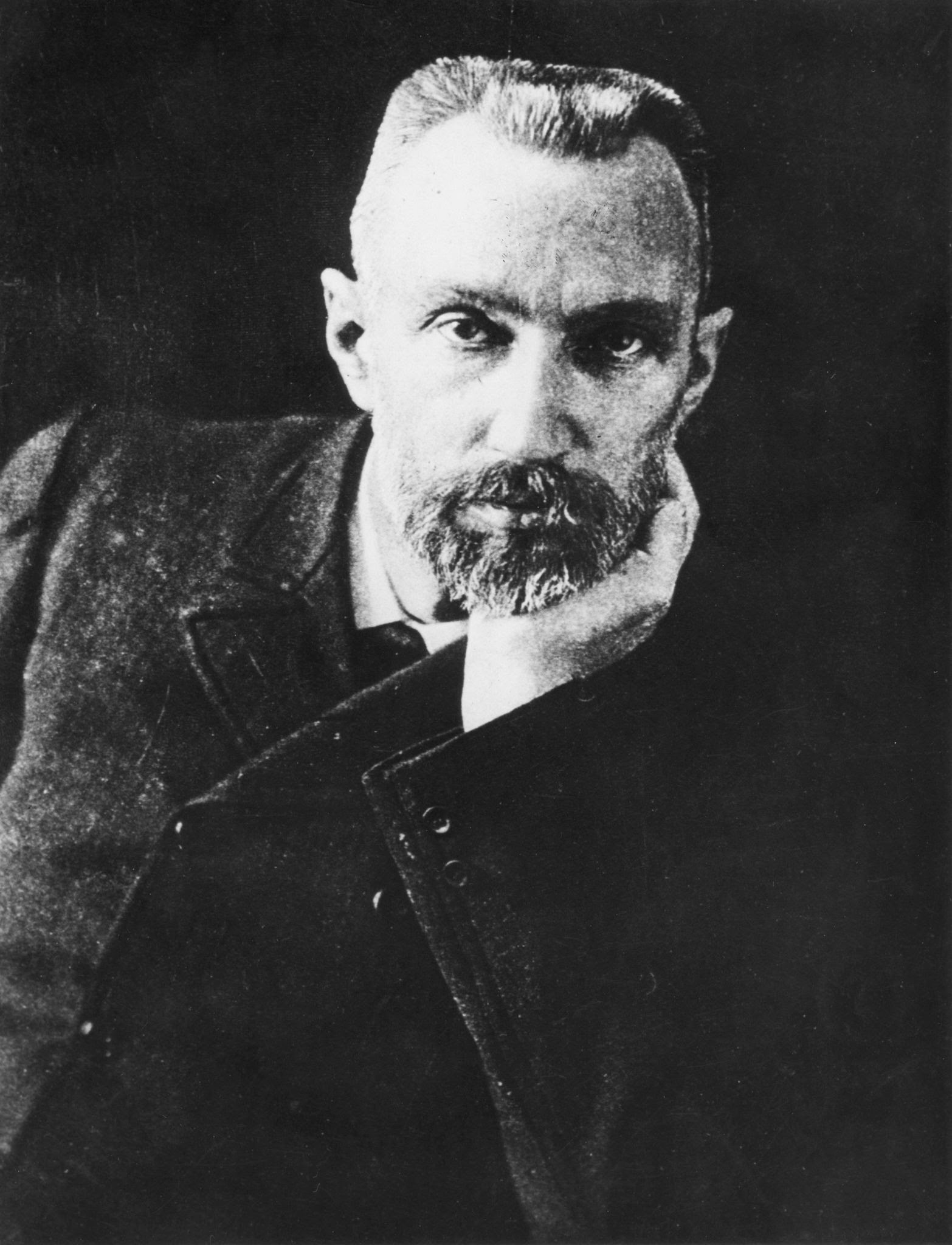Pierre Curie
1859-1906

Pierre Curie, born on May 15, 1859, in Paris, was the son of Eugène Curie, a republican and anticlerical doctor, and Claire Depouilly, the daughter of an Alsatian industrialist. Growing up in a gentle and affectionate atmosphere with his elder brother Jacques, Pierre developed a dreamy and contemplative character, often expressed during solitary walks.
Studies & Early Research
Pierre Curie was educated at home and obtained his bachelor’s degree in science at the age of sixteen. He then earned a degree in physics in 1877 from the Sorbonne, where he was influenced by Charles Wurtz and Charles Friedel. In 1880, together with his brother Jacques, Pierre discovered piezoelectricity, a property of certain crystals. Their collaboration ended in 1882 when Jacques moved to the University of Montpellier. Pierre was then appointed as an assistant at the Municipal School of Industrial Physics and Chemistry of Paris (EMPCI). There, he continued his research, including studies on symmetries in crystals, and developed precision instruments, including an aperiodic balance patented in 1888.
In 1891, Pierre shifted his focus to the magnetic properties of matter, defining the “Curie point.” His doctoral thesis, defended in 1895, led him to a position as professor of general physics at the EMPCI. Pierre was well integrated into the international scientific community, maintaining correspondence with figures such as Ernest Rutherford and Lord Kelvin.
Meeting Marie Skłodowska
Pierre Curie met Marie Skłodowska in 1894. They married in 1895 and began a fruitful scientific collaboration. In 1897, Marie embarked on research into uranium radiation. Pierre supported her by providing resources and instruments. Together, they discovered polonium and radium in 1898.
Work on Radium Properties
In 1900, while Marie focused on radium extraction, Pierre studied its properties. They published papers on the biological and thermal effects of radioactivity. Their work demonstrated that radium emitted heat, challenging previous estimates of the Earth’s age and opening new scientific perspectives.
Honors
Pierre was appointed as a professor at the Faculty of Science in Paris in 1900, with the support of Henri Poincaré. In 1903, the Nobel Prize in Physics was awarded to Henri Becquerel and the Curies for their work on radioactivity. Pierre insisted that Marie be recognized for her contribution. The Nobel Prize advanced their careers but also led to an overwhelming workload and invasive fame.
The Accident
Pierre Curie’s career was tragically cut short by an accident on April 19, 1906, when he was run over by a horse-drawn carriage. His funeral took place on April 21, and Marie Curie received numerous condolence letters from the scientific community. Pierre left a significant scientific legacy, influencing various fields of physics and chemistry.
Pierre Curie remains an iconic figure in science, with discoveries and contributions that continue to impact history.
